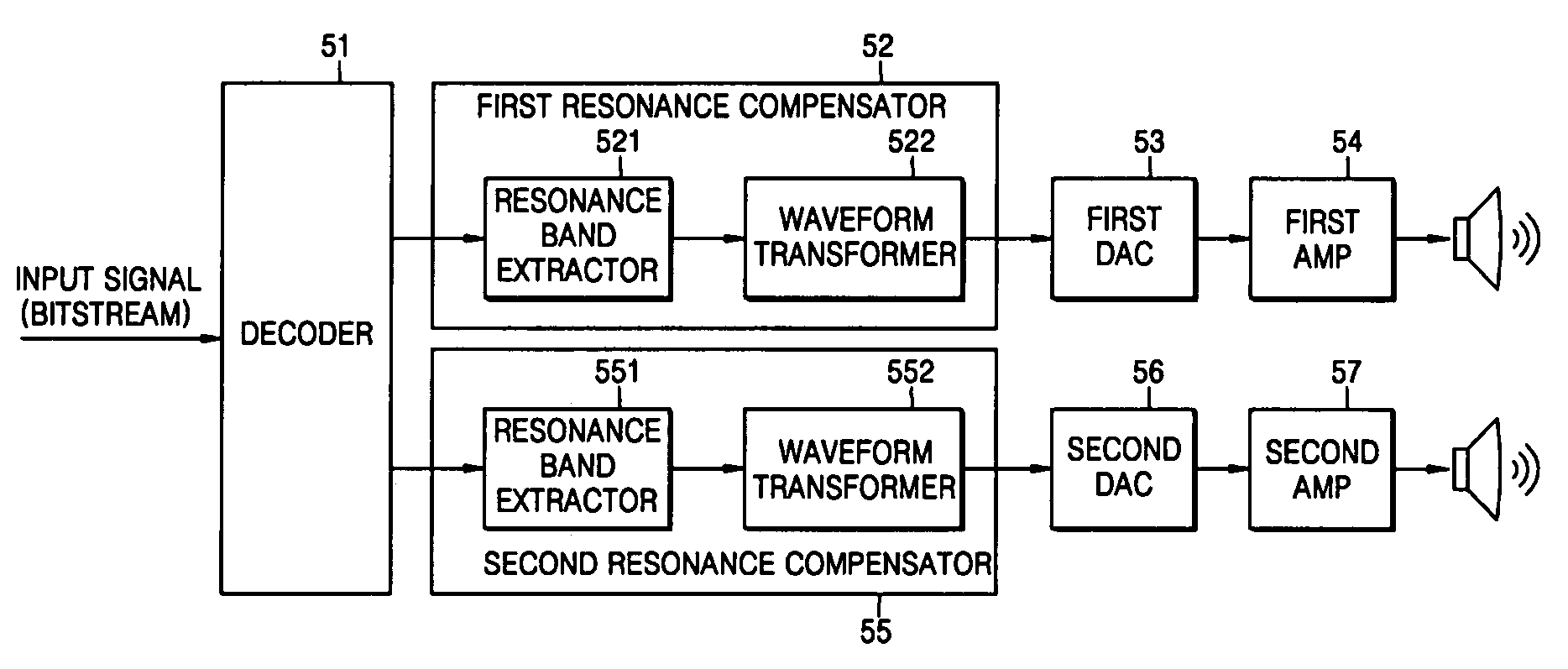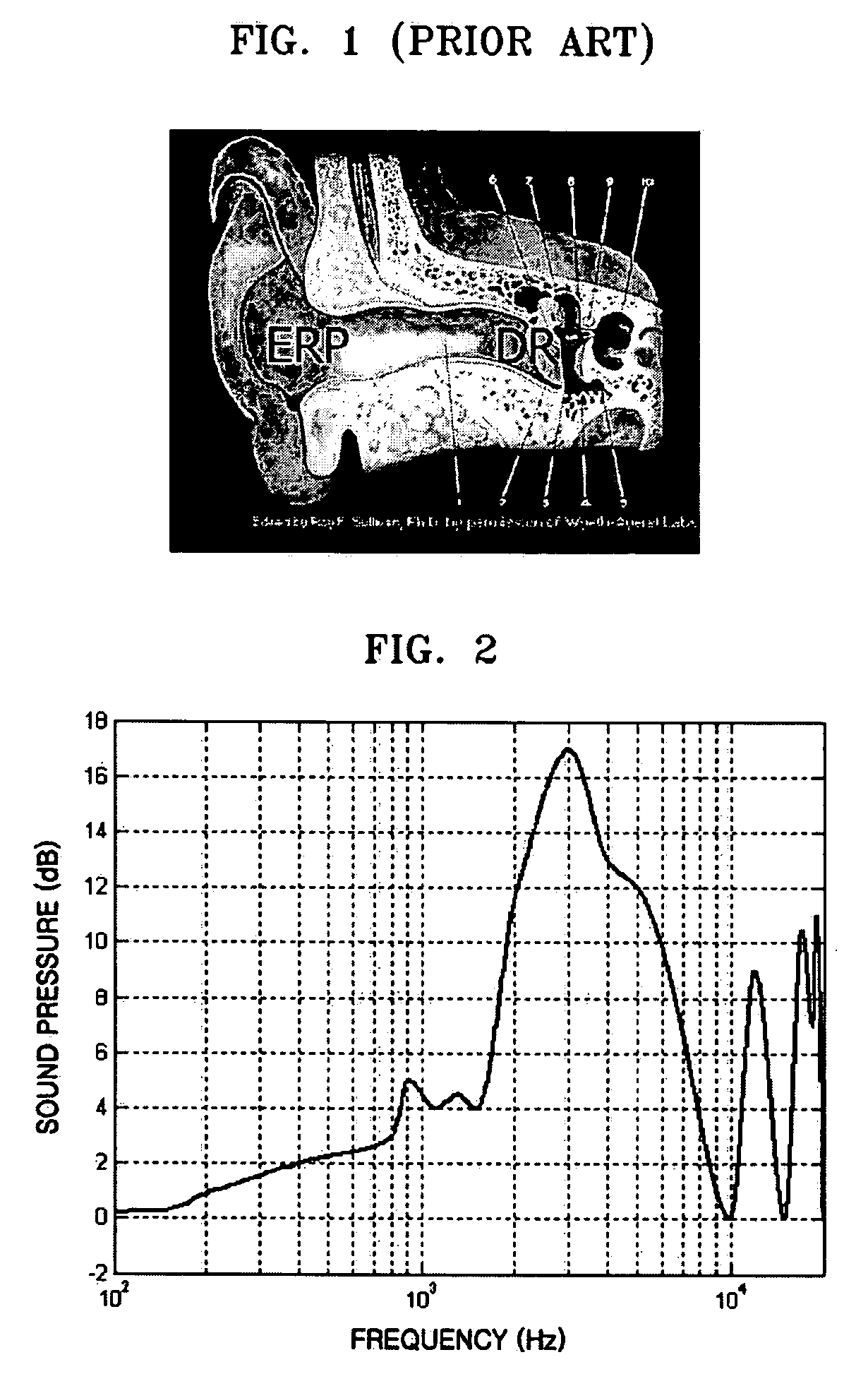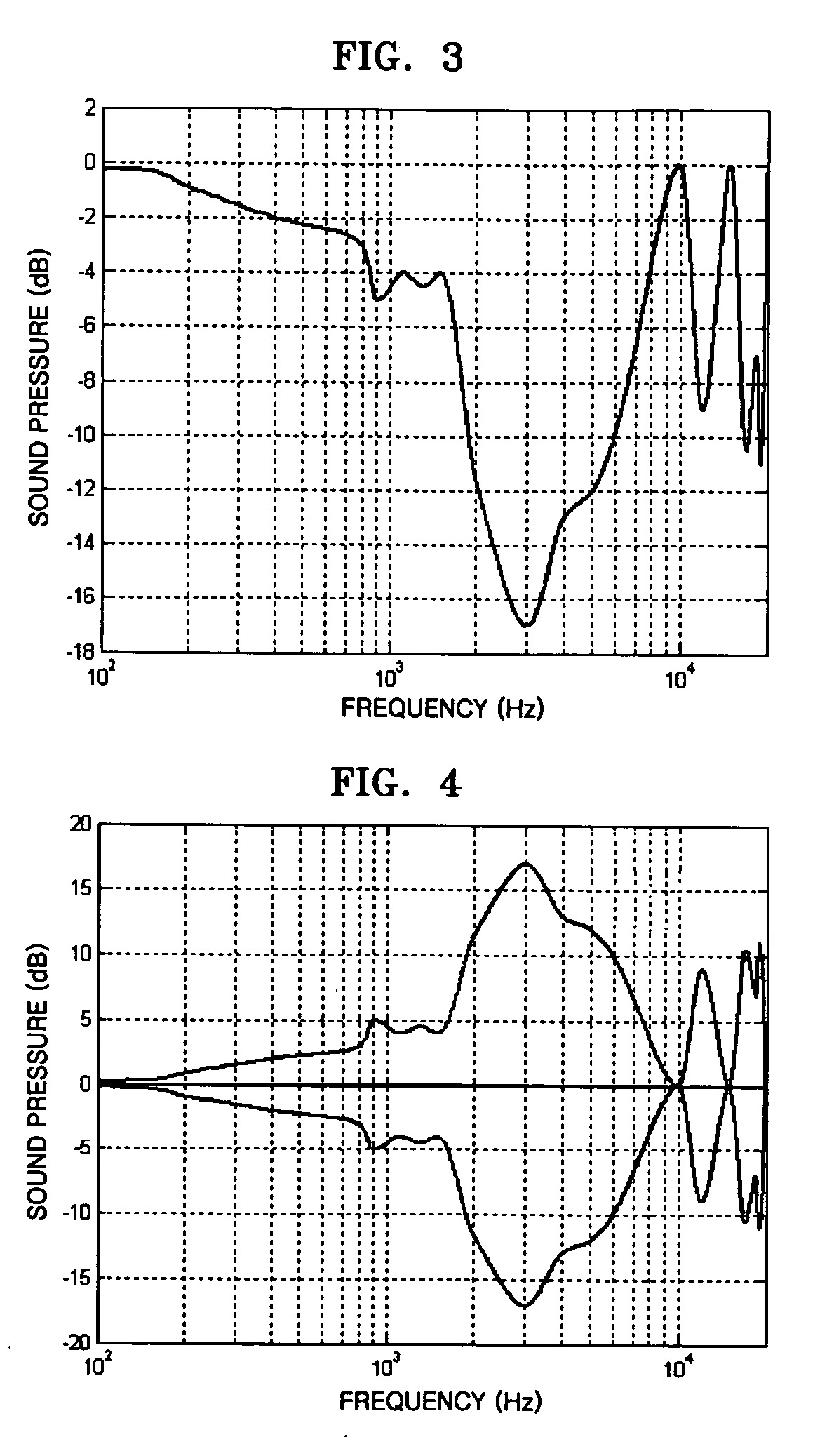Apparatus and method of encoding/decoding an audio signal
a technology of audio signal and audio signal, applied in the field of apparatus and method of encoding/decoding an audio signal, can solve the problems of increasing the importance of problems and the deterioration of the sound quality of the audio signal
- Summary
- Abstract
- Description
- Claims
- Application Information
AI Technical Summary
Benefits of technology
Problems solved by technology
Method used
Image
Examples
Embodiment Construction
[0029] Reference will now be made in detail to the embodiments of the present general inventive concept, examples of which are illustrated in the accompanying drawings, wherein like reference numerals refer to the like elements throughout. The embodiments are described below in order to explain the present general inventive concept while referring to the figures.
[0030]FIG. 2 is a graph illustrating a resonance waveform between an ear reference point (ERP) and a drum reference point (DRP) of a human ear.
[0031] Referring to FIG. 2, a resonance waveform having a sound pressure that is increased by more than 15 dB at around a 1˜10 KHz band due to a sealed space between the ERP and the DRP is measured. The ERP-DRP resonance waveform can be measured by inserting a probe microphone into an ear of a person or a dummy head.
[0032]FIG. 3 is a graph illustrating a compensation waveform obtained by inverting the resonance waveform of FIG. 2.
[0033] Referring to FIG. 3, the compensation wavefo...
PUM
 Login to View More
Login to View More Abstract
Description
Claims
Application Information
 Login to View More
Login to View More - R&D
- Intellectual Property
- Life Sciences
- Materials
- Tech Scout
- Unparalleled Data Quality
- Higher Quality Content
- 60% Fewer Hallucinations
Browse by: Latest US Patents, China's latest patents, Technical Efficacy Thesaurus, Application Domain, Technology Topic, Popular Technical Reports.
© 2025 PatSnap. All rights reserved.Legal|Privacy policy|Modern Slavery Act Transparency Statement|Sitemap|About US| Contact US: help@patsnap.com



